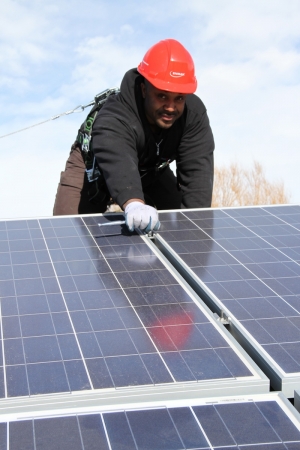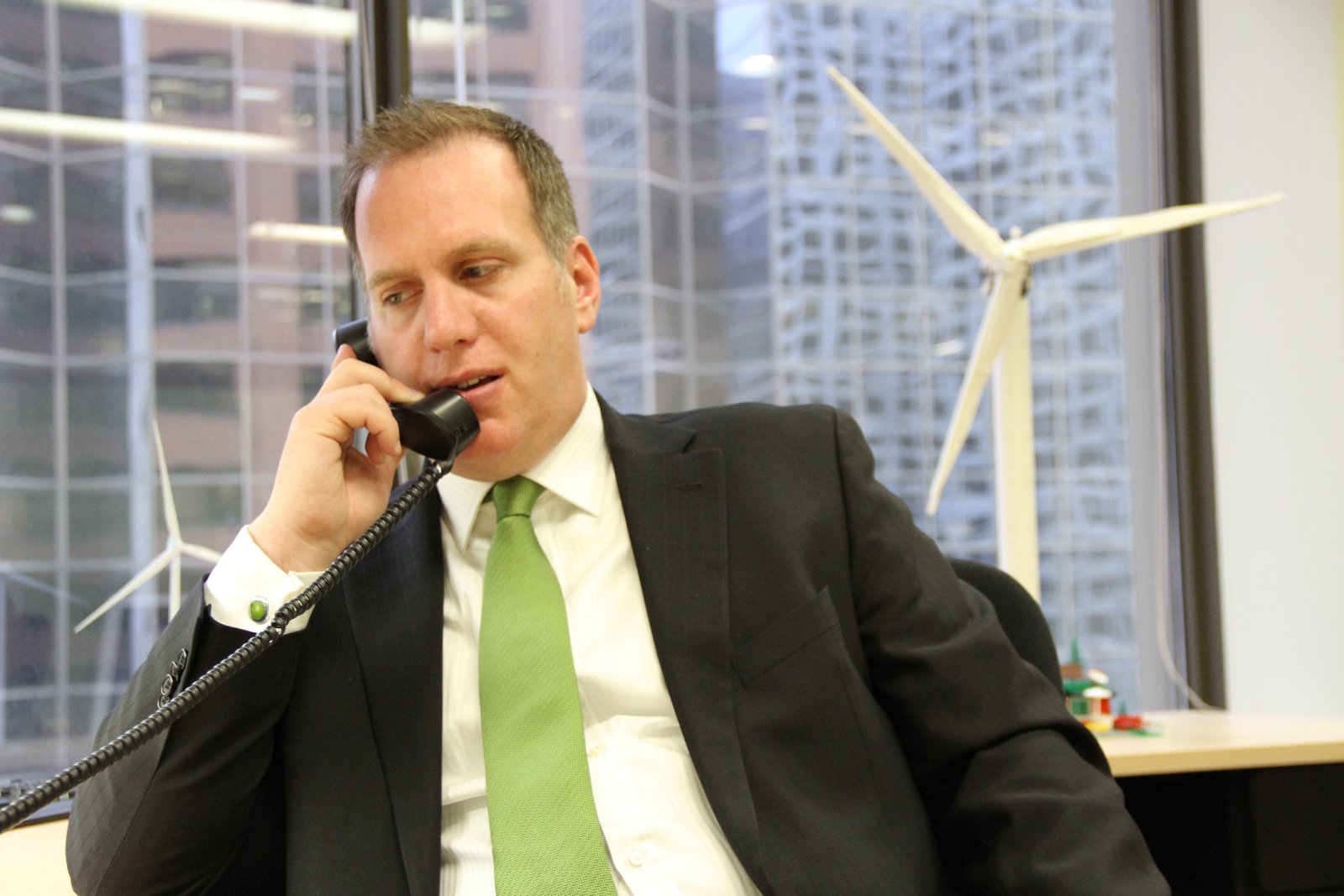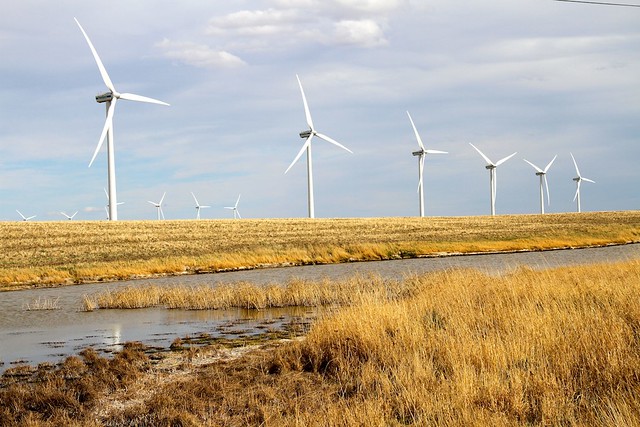By David Dodge and Duncan Kinney
Canada as clean energy superpower – It’s an alluring sound bite. One that Prime Minister Stephen Harper has used, but sadly Canada is more like a gifted but lazy student when it comes to using its powers for good.
Canada has half the population yet is just behind Germany as the sixth largest electricity generation market in the world. Germany is also is the undisputed world heavyweight champion of green energy. In 2012 they installed 32.5 GW of solar and in 2011 they installed 29 GW of wind capacity. In 2011 Canada had one per cent as much, or 289 megawatts of solar capacity, total.
While Germany is a dominant force in the cleantech world, Canada has also only captured one per cent of the $1 trillion worldwide market. And it’s not like we’re not trying. Canada has more than 700 cleantech companies and has a history of being a centre of innovation.
Canada also has plentiful solar, wind, tidal and geothermal resources, Canada has the engineering know-how to follow through and Canada has the entrepreneurial chutzpah to pull it off. And unlike other industries where you might be able to hang back and let another, more ambitious country step into the breech we can’t afford to stand idly by.

David Sawyer, with the International Institute for Sustainable Development estimates that the Canadian government could save more than $1.3 billion a year if it scraps fossil fuel subsidies.
Nick Parker is one of the originals when it comes to cleantech investing. The list of organizations, groups and companies he’s been involved in would be too much to go through, but suffice to say he is veteran in the cleantech field.
“I find it difficult to not be acerbic or negative when it comes to how Canada ranks in the clean energy race,” says Parker. “I call it a race because it is a race. It’s a race in two senses of the word. One, it’s a race against time vis-à-vis climate change. And two, it’s a race vis-à-vis the competition to create the jobs and the wealth that come with being part of the solution.”
It’s into this environment that a report our partners at the Pembina Institute have released a new report called Competing in Clean Energy. They interviewed 22 leading clean energy entrepreneurs, academics and executives and picked their brains to identify the best ways for Canada to capitalize on the global transition to clean energy.
This dovetails on a new report Framing the Future: Embracing the Low-Carbon Economy from the National Roundtable on the Environment and the Economy. “The future is low carbon. Economies the world over are making the transition. Canada’s actions today on climate, energy, trade, innovation, and skills will shape its economic prosperity for decades to come,” says the report.
For Canada to become an active participant in the global low carbon economy there are several key things Canada needs to do.

With more than 700 companies, the cleantech sector has emerged as a major driver of innovation and employment growth, investing almost $2 billion in research and development (R&D) and 11 percent employment growth between 2008 and 2010.
Level the playing field
Canada has a glaring lack of stable and supportive policy for the cleantech industry. Not only that but the support that does exist generally favor the fossil fuel industries. David Sawyer, with the International Institute for Sustainable Development estimates that the Canadian government could save more than $1.3 billion a year if it scraps fossil fuel subsidies.
“It’s hard to compete when your competitors are being subsidized, basically, by society,” says Andrew Heintzman the president and CEO of Investeco Capital, Canada’s first environmental investment company.
A big structural subsidy is the ability of fossil fuel companies to use the atmosphere to absorb immense amounts of CO2 for free. It’s not said out loud often, but both left-wing and right-wing economists agree that putting a price on carbon is the most effective way to harness the powers of the market to manage emissions.
Even the CEO of TransAlta, a massive electricity generator and owner of over 5,000 megawatts of coal-fired generation assets in both the US and Canada can see how it would work.
“I’m an economist,” says Dawn Farrell, the CEO of TransAlta. “I do not believe that you will ever make the right and most efficient decisions on how to do carbon without a price on carbon. If society agrees that the use of the atmosphere for taking up CO2 is a scarce resource, then we know that pricing resources minimizes their use. We have proven over and over that when resources become expensive, we find innovative ways to minimize their use. That is at the heart of competition. So pricing the use of the environment will encourage all of us to find the most cost effective way to minimize its use,” says Farrell in the clean energy report.
John Coyne is a vice-president and general counsel with Unilever. A Fortune 500 company, they’re a massive consumer multinational and have supply chains that run over the world. He too can see the potential in a price on carbon.
“The single most meaningful thing that could be done very quickly in this country that would make a material difference in the performance of this country from an environmental point of view and immediately get the attention and the commitment of the citizens of this country is a carbon tax,” says Coyne in the report. “There’s absolutely nothing else. You talk about designing it. People know how to design taxes. They could do it on the back of an envelope in 48 hours for a carbon tax.”
National Renewable Energy Strategy?
Like “clean energy superpower” the talking point “national energy strategy” has been bandied about by politicians recently, most noticeably by Alberta premier Alison Redford.
While progress has been slow and the talk has mostly focused around the oil sands, any talk of a national energy strategy needs to incorporate thoughtful planning and integration of Canada’s massive renewable energy assets.
While Germany has embraced the clean energy economy the question is whether Canada can do the same while still benefiting from its fossil fuel resources. Germany’s effort is focused and done at a national level. In Canada, energy policy comes from a mash-up of 13 disparate provincial and territorial government, spread over a vast geographic area.

Dan Balaban is the CEO of Greengate Power and as we’ve described him on the program before, a clean energy cowboy who’s building big wind projects in Alberta’s deregulated electricity market with hardly any local government help. “The federal government should be very clear that we favour clean sources of energy in this country to dirty sources of energy,” says Balaban in the report.
Dan Balaban is the CEO of Greengate Power and as we’ve described him on the program before, he’s a clean energy cowboy who’s building big wind projects in Alberta’s deregulated electricity market with hardly any local government help.
“The federal government should be very clear that we favour clean sources of energy in this country to dirty sources of energy,” says Balaban in the report.
While picking winners can be politically problematic the government does have levers at its disposal. The report points to the need to better manage research spending, the development of policies that support low carbon electricity and making it easier for energy entrepreneurs to access capital.
For more detail on these proposals and to hear it straight from the horse’s (or in this case, clean energy entrepreneurs’) mouth check out the the report. With ideas like these Canada can access the budding clean energy economy and not get left sucking on a tailpipe.


